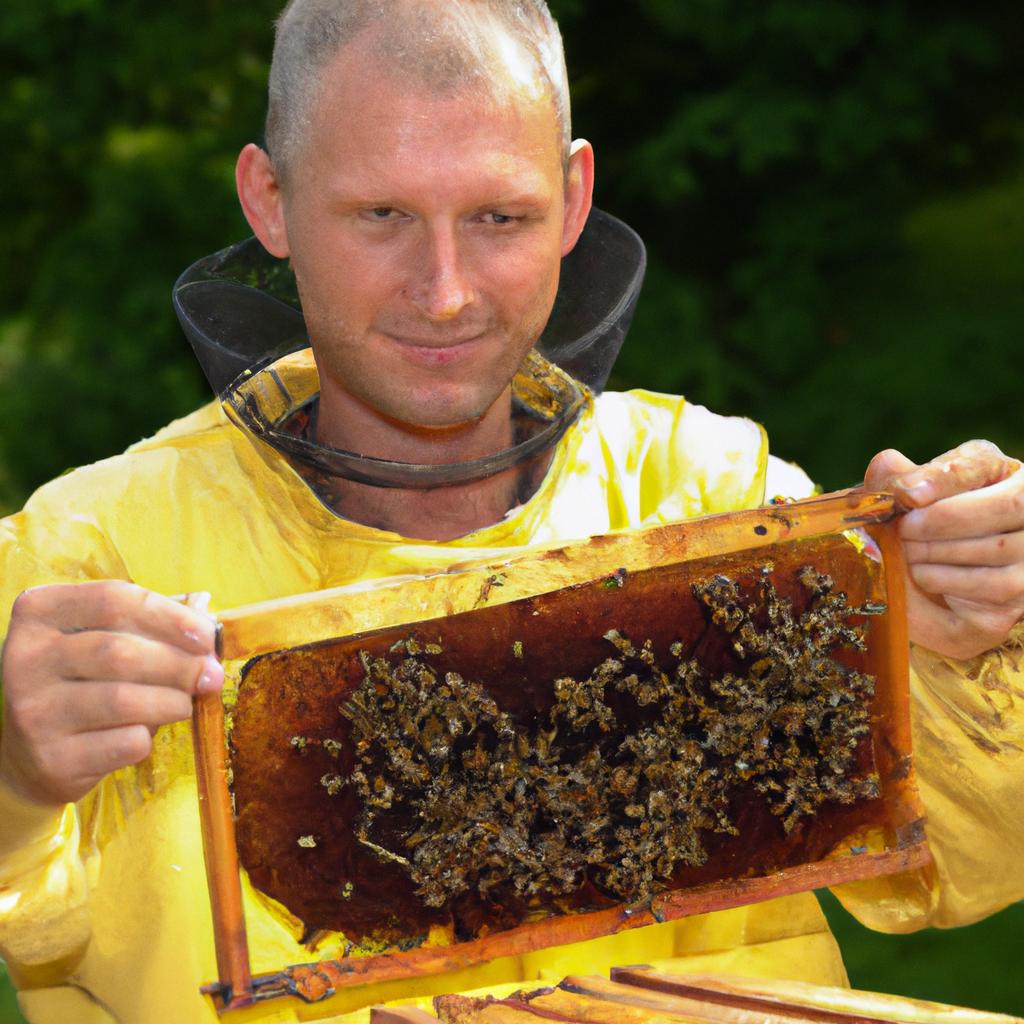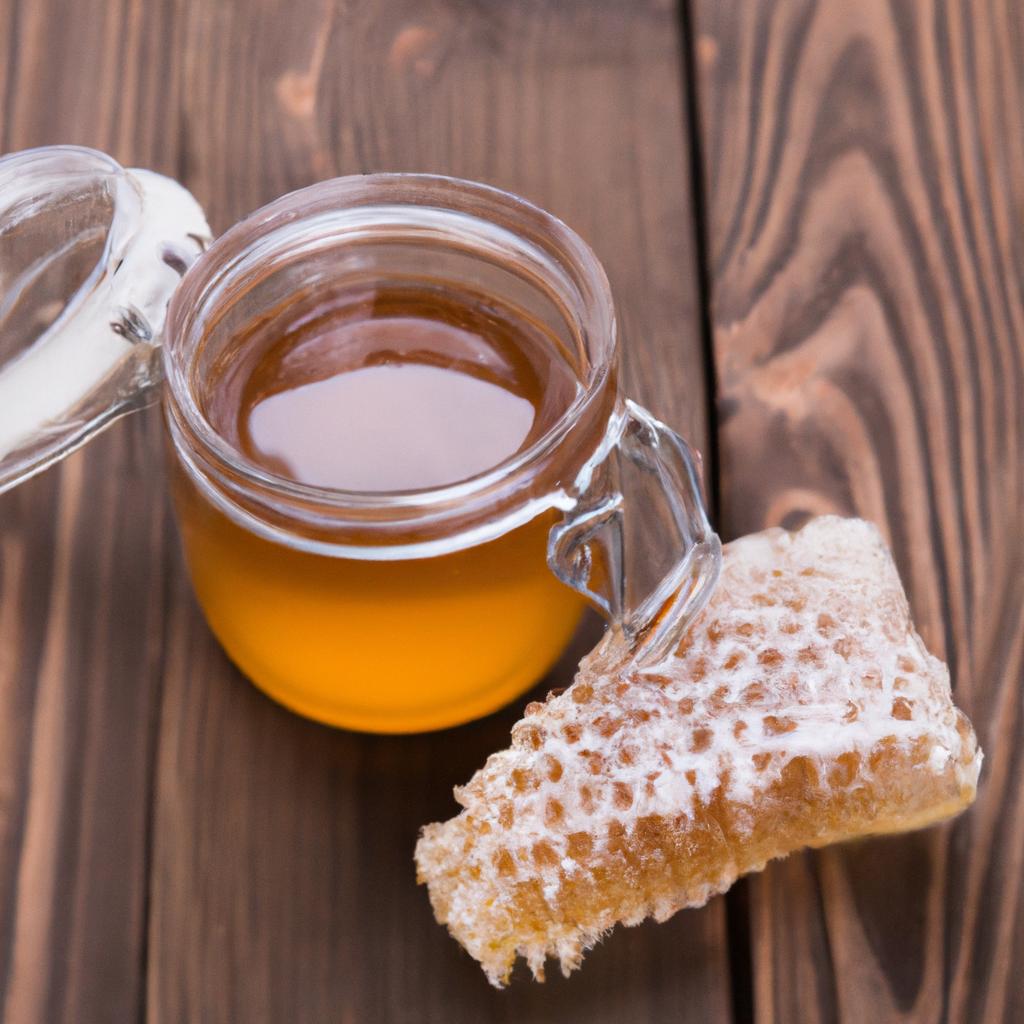Honey is a natural sweetener that has numerous health benefits. Besides being used as a food ingredient, it is also used in the production of cosmetics, medicine, and other products. However, have you ever wondered how long it takes to get honey? In this article, we will explore the honey production process, the timeline for getting honey, and factors that affect the production timeline.
Honey Production Process

The honey production process involves several stages, starting with the collection of nectar by honey bees from flowers. Once collected, the nectar is stored in the bees’ stomachs, where enzymes break down the sugars. The nectar is then regurgitated into other bees’ mouths until it reaches a honeycomb cell. The bees fan their wings to evaporate the water in the nectar, which thickens the solution into honey. Finally, the bees cap the honeycomb cell with wax to seal the honey inside.
The honey production process is not a quick one and can take anywhere from a few weeks to several months, depending on various factors. Some of the factors that affect the production timeline include the availability of nectar, the size of the honeybee colony, and the weather conditions.
Honey Bee Life Cycle

Understanding the life cycle of honey bees can help us comprehend the honey production timeline. Honey bees have a unique social structure, and each bee has a specific role in the hive. The queen bee is responsible for laying eggs, and worker bees are responsible for collecting nectar, building honeycomb, and caring for the young. The male bees, called drones, solely exist to mate with the queen.
Worker bees have a lifespan of approximately six weeks and go through several stages before becoming foragers. The first stage is the egg stage, followed by the larval stage, the pupal stage, and finally, the adult stage. The foragers are responsible for collecting nectar, which is then turned into honey by the other bees.
Understanding the honeybee life cycle is crucial in predicting the timeline for getting honey. For instance, a colony with a larger number of foragers will likely produce honey faster than a smaller colony.
In the next section, we will explore the techniques used to harvest honey and the factors that affect the harvest timeline.
Harvesting honey is the process of removing honey from the honeycomb cells. Beekeepers use various techniques to harvest honey, including the use of a honey extractor, which spins the honeycomb to extract the honey. The honey is then filtered to remove any impurities before being bottled for consumption.
The timeline for harvesting honey depends on various factors, such as the size of the honeycomb, the number of bees in the colony, and the weather conditions. Ideally, beekeepers should wait until the honeycomb is full before harvesting honey to ensure maximum yield. However, beekeepers should also avoid waiting too long to harvest honey, as this can result in the honey fermenting or becoming contaminated.
In conclusion, the timeline for getting honey depends on several factors, including the honey production process, the honeybee life cycle, and the harvesting process. Beekeepers must understand these factors to ensure maximum yield and high-quality honey. Aspiring beekeepers can start by learning the basics of honeybee biology and honey production techniques. For more information on beekeeping and honey production, visit BeeKeepinglove.com.
Honey Bee Life Cycle
The honeybee life cycle consists of four stages: egg, larva, pupa, and adult. The queen bee lays eggs in the honeycomb cells, which hatch into larvae after three days. The worker bees feed the larvae with a mixture of pollen and nectar, known as royal jelly. The larvae then spin cocoons around themselves and enter the pupal stage, where they metamorphose into adult bees. The entire cycle takes approximately 21 days for worker bees and 24 days for drones.
Each bee in the colony has a specific role to play in the production of honey. The worker bees are responsible for collecting nectar, which they bring back to the hive. They regurgitate the nectar into other bees’ mouths until it reaches a honeycomb cell. The bees then fan their wings to evaporate the water in the nectar, which thickens the solution into honey. The bees cap the honeycomb cell with wax to seal the honey inside.
The queen bee is responsible for laying eggs and maintaining the hive’s population. She can lay up to 2,000 eggs per day during peak season. The male bees, or drones, exist solely to mate with the queen bee and do not participate in honey production.
Understanding the honeybee life cycle and the role of each bee in honey production is crucial for beekeepers. It helps them determine when to add or remove honeycomb frames and when to harvest honey to ensure maximum yield.
Harvesting Honey
Beekeepers use various techniques to harvest honey, including the use of a honey extractor, which spins the honeycomb to extract the honey. The honey is then filtered to remove any impurities before being bottled for consumption.
The timing of the honey harvest depends on several factors, such as the size of the honeycomb, the number of bees in the colony, and the weather conditions. Beekeepers should wait until the honeycomb is full before harvesting honey to ensure maximum yield. However, they should also avoid waiting too long to harvest honey, as this can result in the honey fermenting or becoming contaminated.
Beekeepers should also take precautions to avoid harming the bees during the harvesting process. They can use a bee escape board, which allows the bees to exit the honeycomb but prevents them from re-entering. This makes it easier for beekeepers to remove the honeycomb frames without harming the bees.
In conclusion, the honey production process involves several stages, and the timeline for getting honey depends on various factors. Understanding the honeybee life cycle and the role of each bee in honey production is crucial for beekeepers. Beekeepers should also use the right techniques to harvest honey and take precautions to avoid harming the bees. For more information on beekeeping and honey production, visit BeeKeepinglove.com.
Timeline for Getting Honey
The timeline for getting honey varies depending on various factors, including the honey production process and the honeybee life cycle. On average, it takes about six to eight weeks for bees to turn nectar into honey. However, this timeline can be affected by factors such as the availability of nectar, the size of the honeybee colony, and the weather conditions. During the winter months, bees are less active, and honey production slows down significantly.
Another factor that affects the timeline for getting honey is the harvesting process. Beekeepers should avoid harvesting honey too soon or too late to ensure maximum yield and high-quality honey. Waiting too long to harvest honey can result in the honey fermenting or becoming contaminated, while harvesting too soon can result in low yield.
Conclusion
In conclusion, honey production is a complex process that involves several stages and factors that affect the timeline for getting honey. Understanding the honey production process, the honeybee life cycle, and the harvesting process is crucial in ensuring maximum yield and high-quality honey. As a beekeeper or aspiring beekeeper, it is essential to be patient and monitor the bees’ behavior to determine the best time to harvest honey. By following these guidelines, beekeepers can produce high-quality honey that is not only delicious but also healthy. So, start your journey to becoming a beekeeper today by visiting BeeKeepinglove.com and learning more about honey production.
